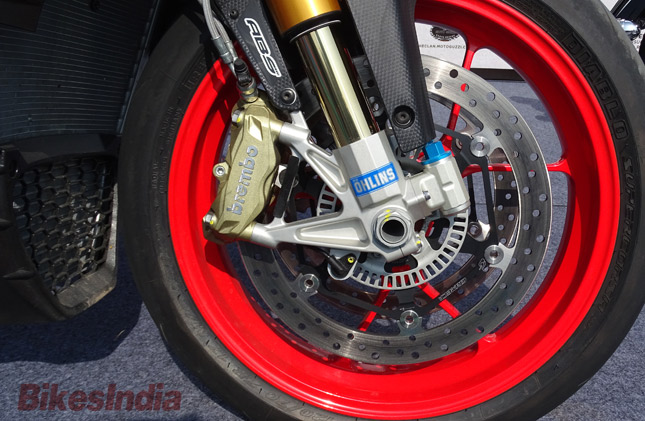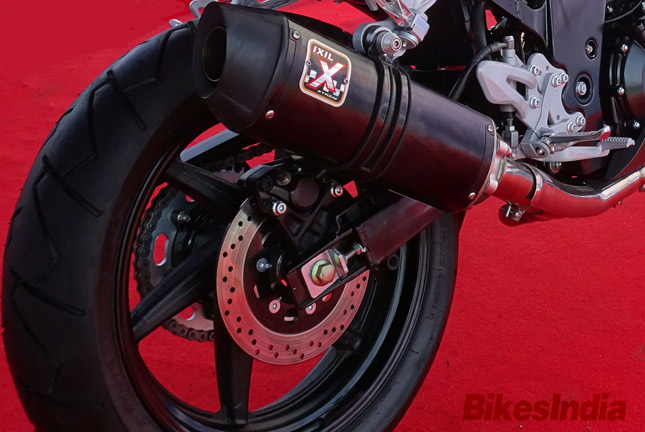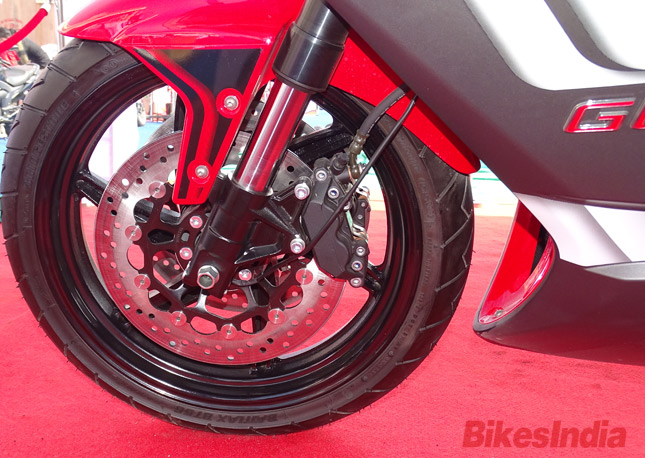 Many of the new bikes today are coming with disc brakes equipped on them. This is because they are better than the conventional drum brakes. But there are somethings about the disc brakes that we still do not understand and that are the calipers of the brakes. We have seen terms on manuals of bikes like fixed calipers and floating calipers and also 2 pot calipers and 3 pot calipers and so on. So today we are going to check out what the types of calipers are, and what the number of pot calipers mean and how do they impact the braking effect of any bike.
Many of the new bikes today are coming with disc brakes equipped on them. This is because they are better than the conventional drum brakes. But there are somethings about the disc brakes that we still do not understand and that are the calipers of the brakes. We have seen terms on manuals of bikes like fixed calipers and floating calipers and also 2 pot calipers and 3 pot calipers and so on. So today we are going to check out what the types of calipers are, and what the number of pot calipers mean and how do they impact the braking effect of any bike. Brake Caliper
Fixed Calipers:
Check out any of the disc brake mechanism and you will see the housing connected to the discs which has the disc pads in it. The housing in its entirety is called caliper housing or simply just a caliper. This unit when it connected to the frame of the bike and not on the wheel or the disc unit is called a fixed caliper. It means the caliper is not moving or suspended from anything to get it in contact with the disc.
Floating Calipers:
The brake calipers which are not fixed to any kind of support but that suspended onto something so that they can grab on to the disc are called floating calipers. Many bikes with rear disc brakes have a floating caliper on the back since the back wheel area does not allow for enough space near the disc location to fix the caliper. Hence getting the caliper to float is the only option. Also in floating calipers, the pistons of the calipers to push the brake pads on the disc are located only on one side the caliper unlike on the fixed type which has pistons on both ends. We will come to what the pistons are in some.
Now that this issue has been resolved, it is time to check out what exactly are pots in a caliper and how they affect the braking system and how important are they.Check out any of the disc brake mechanism and you will see the housing connected to the discs which has the disc pads in it. The housing in its entirety is called caliper housing or simply just a caliper. This unit when it connected to the frame of the bike and not on the wheel or the disc unit is called a fixed caliper. It means the caliper is not moving or suspended from anything to get it in contact with the disc.
Floating Calipers:
The brake calipers which are not fixed to any kind of support but that suspended onto something so that they can grab on to the disc are called floating calipers. Many bikes with rear disc brakes have a floating caliper on the back since the back wheel area does not allow for enough space near the disc location to fix the caliper. Hence getting the caliper to float is the only option. Also in floating calipers, the pistons of the calipers to push the brake pads on the disc are located only on one side the caliper unlike on the fixed type which has pistons on both ends. We will come to what the pistons are in some.
READ MORE: How Motorcycle Disc Brakes Work
Caliper pots are actually nothing but pistons which are controlled by the hydraulic pressure from the brake fluids. So inside a braking caliper, but you real that a brake is a 4 pot caliper, that means the braking caliper has 4 pistons in it and hence has that big a brake pad. The number of pistons is actually handy when the brakes are to be applied in a controlled fashion.
 Suppose a brake caliper has a single pot caliper. That means there is just one piston on the caliper pushing the pad on the disc. Now when the brake the applied, the entire hydraulic force from the brake fluids goes to the single piston and whatever pressure arises is all transmitted onto the disc. This makes the bike just stop. Now no matter how hard you press on the brake lever, the amount of braking force that will be applied will be exactly the same, no matter what.
Suppose a brake caliper has a single pot caliper. That means there is just one piston on the caliper pushing the pad on the disc. Now when the brake the applied, the entire hydraulic force from the brake fluids goes to the single piston and whatever pressure arises is all transmitted onto the disc. This makes the bike just stop. Now no matter how hard you press on the brake lever, the amount of braking force that will be applied will be exactly the same, no matter what.READ MORE: Why Disc Brakes Are Better Than Drum Brakes?
Here is where the multiple pots come handy. The number of pots means the number of pistons. That means when the hydraulic pressure gets applied onto the caliper, it pushes the brake pads on the disc, but the pressure is all divided between the number of pistons there are. That means if you give a gentle tug on the brake level, the pressure will be just enough to slow down the bike, but if you get a hard pull, more pressure will be applied on all the pistons and there will be that many number of times the braking force applied on the disc compared to the single piston brake. Hence the bike will stop in a rush and more quickly. This is how the number of pots works.
 So the more the number of pots, the better the braking power the bike will have, but one has to realize that you cannot have innumerable pots since there is a higher limit until the disc can handle pressure after which it simply succumbs and breaks and that is not good for us. So depending upon the use and power output of the bike, the pots on the disc brakes are decided upon. For this very reason the superbikes and hyper bikes that need more stopping power get dual disc on the front with 4 pot calipers each; that means a total of 8 pistons acting on the braking of the bike.
So the more the number of pots, the better the braking power the bike will have, but one has to realize that you cannot have innumerable pots since there is a higher limit until the disc can handle pressure after which it simply succumbs and breaks and that is not good for us. So depending upon the use and power output of the bike, the pots on the disc brakes are decided upon. For this very reason the superbikes and hyper bikes that need more stopping power get dual disc on the front with 4 pot calipers each; that means a total of 8 pistons acting on the braking of the bike.The rear wheel disc brakes are generally to only keep the bike steady and slide around while the front brakes are acting up and hence they are small discs and get 2-3 pot calipers depending upon the need and also on the space available to fit the caliper on the bike.
READ MORE: Effective Motorcycle Braking Techniques
So this is exactly how the disc brake calipers work and how they are. I hope the information was helpful to you all and you will be now able to understand your braking system much more better and use your brakes more judgingly and not under-estimate or over-estimate the braking of your bikes.
Do hit us below in the comments section if you have any more queries regarding these topics and do share this with as many of your friends and fellow bikers as possible and stay tuned to BikesIndia for more such informative articles. Happy rides for many miles!
By: Pratik Patole











